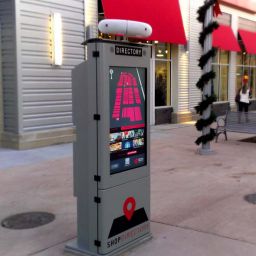As we discussed in The Future of Digital Kiosks, 2016 proved to be an innovative year for self-service solutions and set the foundation for continuous technological breakthroughs in the future. But to fully understand the advances in self-service kiosks we must first look back at the long and complex history of the self-service kiosk industry.
The self-service industry first began with the introduction of vending machines in the 1880s. Throughout the following decades, consumers would begin to use self-service gas stations, ATMs and other forms of self-service. Then, towards the end of the twentieth century, people abruptly began using telephones and computers in a whole new way. No longer objects meant for the office desk, but as everyday tools for interaction. It was in this environment that self-service integrated with technology to create a new industry of digital interaction.
The First Self-Service Kiosks
The first interactive kiosk was developed in 1977 by Murray Lappe. “The Plato Hotline” was used for informational purposes at the University of Illinois at Urbana-Champaign. During the 1980s, the interactive voice response unit (IVR) expanded as consumers demanded innovative self-service technology. IVR allowed companies to provide customer service at a low cost and provided consumers with a more convenient solution.
Advances in Self-Service Kiosks
Employee self-service systems were introduced in the early 1990s. Companies were seeing so many advantages of self-service technology that by 2000, around 15% of organizations, including Pfizer, Dell, and Hewlett-Packard, had implemented a self-service solution. However, it wasn’t until the Dot-Com Boom started in 1995 that the self-service industry, as we know it today, began. People were now using the internet to interact with each other and with information. Kiosk innovators saw this trend and looked to improve user experience with self-service solutions. From wayfinding to retail, self-service kiosks are engaging users and providing enhance the experience with digital information.
Looking Ahead at Self-Service Kiosks
Continued innovation and breakthroughs in technology will only further the capabilities of self-service kiosks. Mobile integration with self-service kiosks will improve and expand and advances in technology will also increase the availability and reliability of kiosks. “People want to interact with technology, and as we continue to improve that technology, consumers will demand the convenience of self-service kiosks,” said Meridian CEO, Chris Gilder.




